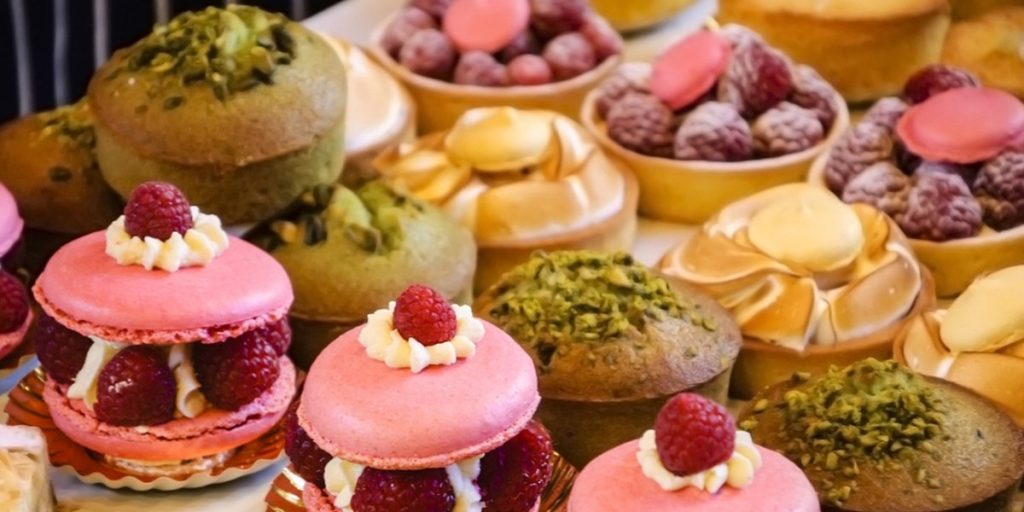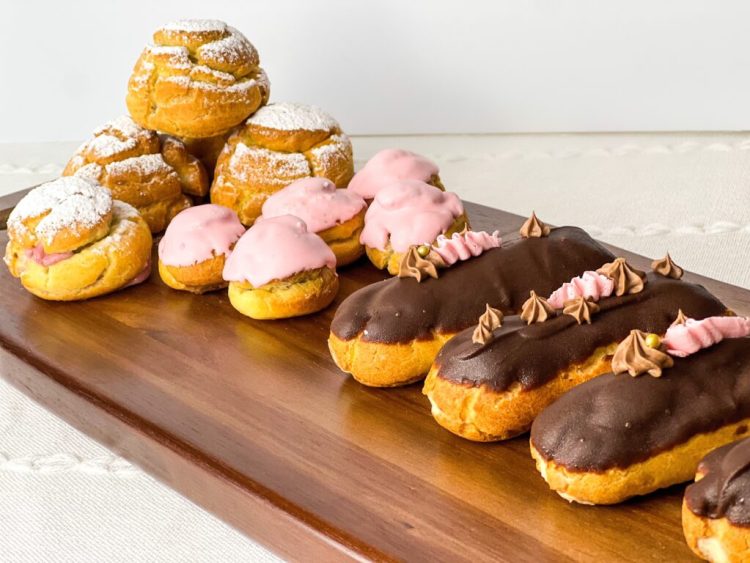French pastry is a hallmark of refined culinary artistry, renowned worldwide for its exceptional flavor, delicate textures, and creative presentations. As a pillar of French gastronomy, pastry has evolved over centuries, shaping not only French culture but also the global culinary scene. From the classic croissant to the extravagant Paris-Brest, French pastries are more than just desserts—they are an embodiment of craftsmanship, tradition, and luxury.
This article invites you on a culinary journey through the world of French pastry, exploring its rich history, iconic pastries, and regional specialties. Whether you’re a seasoned connoisseur or a pastry novice, this exploration will offer insights into the delicate art of French baking, the origins of timeless pastries, and the best places to indulge in these sweet masterpieces.
1. The Legacy of French Pastry: A Rich History of Sweet Delights
The roots of French pastry can be traced back to the Renaissance period, when French royalty and nobility first began indulging in sophisticated sugar-based confections. Over time, French pastry chefs refined techniques, blending rich butter, cream, and chocolate with the art of delicate doughs. By the 19th century, iconic French pastries like the Éclair and Madeleine emerged, elevating pastry to a culinary art form.
The Role of Pastry in French Culture
Pastries play a central role in French cuisine, serving as the perfect accompaniment to a cup of coffee or as the grand finale to an elegant meal. The preparation and consumption of pastries are not just about indulgence—they are part of the broader cultural experience of savoring life’s pleasures. In France, pastry shops, or pâtisseries, are ubiquitous and often serve as gathering spots for locals and tourists alike. Whether enjoyed at breakfast, as an afternoon treat, or after a fine dinner, French pastries are a beloved part of the daily routine.
Famous Pastry Regions
Different regions of France are known for their specific pastry specialties. For example:
- Paris is home to iconic pastries such as the macaron and mille-feuille.
- The Provence region is famous for tarte tropézienne, a sweet brioche filled with a creamy filling.
- Brittany offers the delicious kouign-amann, a caramelized pastry made from buttery layers of dough.
2. Iconic French Pastries: Masterpieces of Taste and Technique
French pastry chefs have perfected countless sweets over the years, each one representing a unique combination of flavor, texture, and technique. Here are some of the most famous French pastries that continue to enchant palates worldwide:
Croissant: A Flaky, Buttery Delight
The croissant is perhaps the most recognizable French pastry, celebrated for its delicate, flaky texture and buttery flavor. Traditionally enjoyed at breakfast with a cup of coffee, the croissant has become a global symbol of French culinary expertise. Its creation requires a precise technique of folding and rolling layers of dough with butter, resulting in a pastry that’s both light and rich.
- Origin: Though widely associated with France, the croissant actually has origins in Vienna, Austria. However, it was in France where it was perfected and became a quintessential part of the national pastry repertoire.
Éclair: A Delicious Obsession
The éclair is a long, thin pastry filled with cream and topped with a glossy layer of chocolate icing. Its name comes from the French word “éclair” (lightning), likely referring to the speed with which the pastry is eaten. The éclair has become one of the most beloved pastries in both France and beyond, with flavors ranging from traditional chocolate and vanilla to more contemporary options like coffee and fruit-filled varieties.
- Origin: The éclair was invented in the 19th century by pastry chef Antonin Carême, who is often referred to as the “King of Chefs.”
Mille-Feuille: Layers of Indulgence
Also known as the Napoleon, the mille-feuille is a layered pastry consisting of crisp puff pastry, smooth pastry cream, and often a glaze or icing on top. The name “mille-feuille” translates to “a thousand leaves,” referring to the many delicate layers that give the pastry its light, crisp texture. It’s an elegant and timeless French treat enjoyed by dessert lovers everywhere.
- Origin: The mille-feuille dates back to the 17th century, with some historians attributing its invention to the famous French pastry chef Frédéric Boucher.
Macaron: The Elegant Meringue Cookie
The macaron is a delicate, airy meringue-based cookie sandwich, filled with a wide variety of fillings ranging from buttercream to ganache and fruit jams. Macarons have become internationally renowned, with many considering the Parisian Ladurée and Pierre Hermé boutiques as the places to indulge in the most exquisite versions.
- Origin: The macaron was originally an Italian creation but gained its current form in France in the 16th century. The modern macaron, as we know it today, is said to have been popularized by French pastry chef Pierre Desfontaines.
Paris-Brest: A Celebration of Hazelnut
The Paris-Brest is a ring-shaped pastry filled with a rich hazelnut-flavored cream. It was created in 1910 by pastry chef Louis Durand to celebrate the Paris-Brest-Paris bicycle race. The pastry’s round shape symbolizes a bicycle wheel, making it both a visual and culinary tribute to the race.
- Origin: This pastry was first crafted in Maisons-Laffitte, a town near Paris, and has since become a popular French dessert.

3. Best Places to Experience French Pastry: Indulge in Sweet Delights
While French pastries can be found in patisseries and cafes worldwide, there’s no substitute for enjoying them in their homeland. If you’re planning to experience the very best of French pastry, here are some of the best places to visit:
Paris: The Epicenter of French Pastry
Paris is undoubtedly the capital of French pastry. Renowned for its pastry boutiques, Parisian patisseries like Ladurée, Pierre Hermé, and Le Meurice serve some of the finest pastries in the world. Here, you can indulge in macarons, éclairs, croissants, and other masterpieces while soaking in the charm of Parisian cafes and bistros.
Lyon: The Culinary Capital of France
Lyon is often regarded as the culinary capital of France, and its pastry scene is no exception. The city’s Lyonnaise pastry shops offer unique specialties such as the tarte à la praline (a sweet, nutty tart) and brioches. Visiting Lyon allows you to taste pastries that are deeply rooted in the city’s local culinary traditions.
Provence: A Taste of the South
In the south of France, Provence is home to a variety of regional pastries that reflect the Mediterranean influences of the area. For a unique pastry experience, try the tarte tropézienne, a rich cream-filled brioche, at local bakeries in Saint-Tropez or other Provencal villages.
4. French Pastry Masterpieces: The Future of Sweet Craftsmanship
The art of French pastry is always evolving, as modern pastry chefs continue to experiment with new flavors, textures, and techniques. While traditional French pastries remain popular, the next generation of chefs is bringing creativity and innovation to the craft. You’ll see new twists on classic pastries, such as matcha éclairs, vegan macarons, and molecular gastronomy-inspired desserts that push the boundaries of pastry-making.
Additionally, pastry chefs are focusing on sustainability, with many now using locally sourced ingredients, organic products, and eco-friendly packaging. The future of French pastry promises not only delicious treats but also a greater commitment to sustainability and creativity.
Conclusion: A Sweet Indulgence for All Senses
A journey through French pastry is a feast for the senses. The buttery layers of a croissant, the smooth decadence of a chocolate éclair, and the delicate sweetness of a macaron all offer a taste of French history and culture. Whether you’re a pastry aficionado or new to the world of French sweets, exploring these pastries and the stories behind them offers a deep connection to French culinary tradition and a chance to savor some of the finest desserts in the world.





















